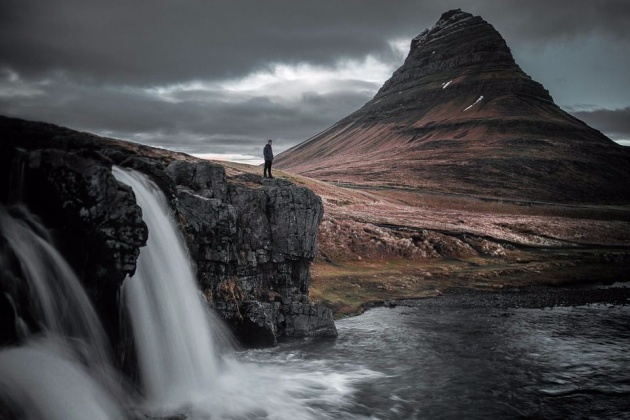At present, I am mainly observing the physical motions of mountains, water, trees, and flowers. One is everywhere reminded of several movements in the human body, of similar impulses to joy and suffering in plants.
-Egon Schiele-
When Galileo first pointed a telescope at the moon, among the things he saw were the mountains on its surface. In our day, Mariner space probes have sent us pictures of Mars showing mountains. In fact, mountains are one of the few features that the earth, moon, and Mars have in common. And yet there is a great difference between the mountains of the earth and the mountains of these other worlds.
On the earth, most mountains stretched across the land and under the sea in the long line chain. The form vast ranges and systems of mountains. On the moon and Mars, these systems are missing: regions of mountains are dotted here and there. The reason for this great difference is that the moon and probably Mars are dead worlds. No new mountains are coming into being there. The Earth is a live, changing world, with new mountains growing all the time.
GEOLOGY
There are three main types of mountains: volcanic, fold, and block. All three types are formed from plate tectonics: when a portion of the Earth's crust move, crumple, and dive. Compressional forces, isostatic uplift, and intrusion of igneous matter surface rock upward creating landform higher than the surrounding features. The height of a feature makes it either a hill or, if higher and steeper, a mountain. Major mountain tends to occur in long linear arcs, indication tectonic plates boundaries, and activity.
-Read more: Wikipedia-
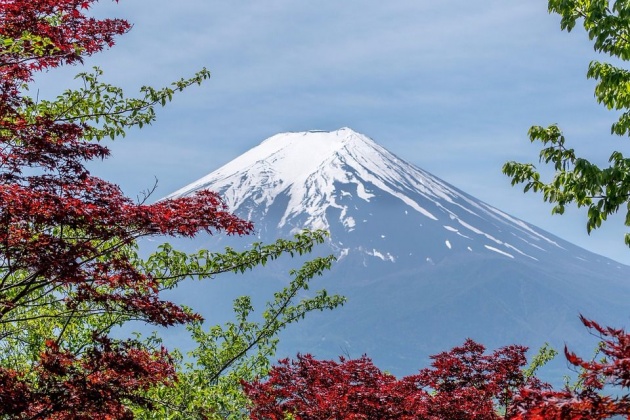
Mount Fuji, in Japan, is a volcanic mountain which last erupted in 1707. (Image courtesy: pixabay.com)
MOUNTAINS UNDER THE SEA
Whenever we hear the word 'mountain', we usually think of ice-capped Mount Everest, of the huge mass of the Rocky Mountains in the United States, or we may dream of the Andrew, where the ancient Inca Indians hid their treasures of gold. We imagine towering fingers of rock pointing upwards to the skies. But there are other mountains that we do not see. Or if we do see them, we do not recognize them as mountains. These are the mountains under the sea.
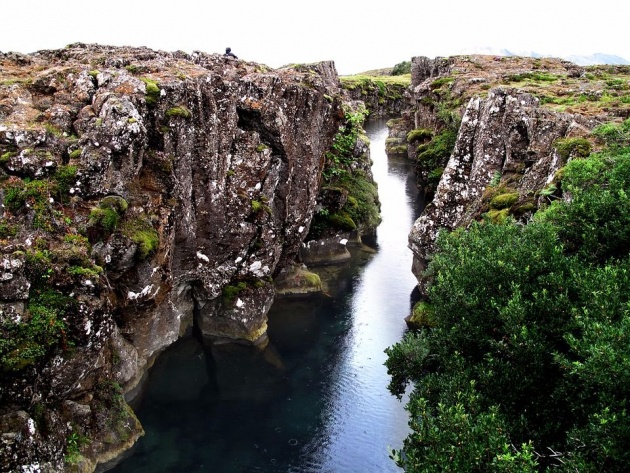
A great mountain range, 10,000 miles (16,000 kilometers) long, rises from the bottom of the Atlantic Ocean. It is called the Mid-Atlantic-Ridge, and it runs from north to south from the edges of the Arctic Circle to the fringes of the Arctic. At its widest point, it stretches 1,000 miles (1,600 kilometers). (Image courtesy: pixabay.com)
Here and there, the highest peaks of this enormous underwater mountain range break through the ocean's surface as islands.
Iceland, The Azores, Ascension Island, St.Helena, and Tristan da Cunha all cruise from different parts of the ridge. These islands are volcanoes, which means they have holes in them out of which steam, flames, lava, and gas may burst. (Image Courtesy: pixabay.com)
There are smaller mountain ranges rising from the bed of the Pacific Ocean. The beautiful islands of Hawaii, in the middle of the Pacific, are ocean volcanoes that have risen above the sea's surface. 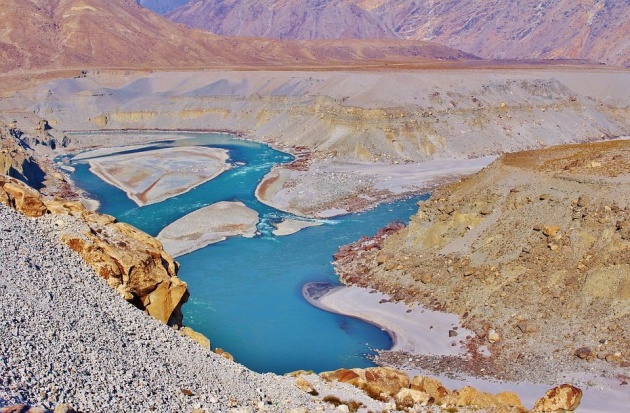
Many of the valleys in the Himalayas are lush and fertile areas surrounded by high peaks. (Image Courtesy: pixabay.com)
QUESTION: Are there mountains under the sea?
There are many of them and they come in all shapes and sizes. These mountains are formed due to volcanic activity under the sea. They generally formed when the volcanic mountains rise up from the seafloor but fail to reach the surface. These mountains form clusters or groups. Some are so high that they stick out of the water to look like the island but they are not islands. These mountains follow the distinctive pattern of growth, activity, and death.
-My Team Explore-
THE ROOF OF THE WORLD
The highest mountain system in the world is the Himalayas in southern Asia. (Himalaya is a Sanskrit word meaning 'snowy range'.) There are actually several running side by side. They form a 1,500-mile (2,400-kilometers) barrier between northern India and Tibet.
Among the 146 major Himalayan peaks, there are 40 that rise to more than 25,000 feet (7,600 meters). They include Mount Everest, the world's highest mountain, which rises to more than 29,000 feet (8,000 meters). The Himalayas are so high and so massive that they have have been called 'the roof of the world.'
But not all of the Himalayas are covered in snow and ice. Because they stretch for such an enormous distance, parts of the range rise in lush, tropical jungles. On the higher slopes, swiftly flowing streams rise to feed three of the world's greatest rivers- the Indus, Ganges, and Brahmaputra.
SOUTH AMERICAN HEIGHTS
The longest mountain system in the world, the second in height only to the Himalayas, is the Andes of South America. These rugged mountains start on the shores of the Caribbean Sea in the north and run for more than 4,000 miles (6,400 kilometers) along the whole length of the west coast of South America. They end in the islands of Tierra del Fuego in the far south.
There are dozens of peaks that are more than 20,000 feet (6,100 meters) high. Among them is Aconcagua, 22,835 feet (6,960 meters) high, the highest mountain in the Western Hemisphere. It rises in Argentina. Cotopaxi, 19,344 feet (5,896 meters) high, is the world's highest active volcano. It rises in Ecuador. Chimborazo, 20,577 feet (6,276 meters) high, is another volcano in Ecuador but is no longer active. It stands almost on the Equator, where the weather is always very hot. But because of its great height, the mountain is snow-covered all the year round.
Lake Titicaca, some 12,507 feet (3,674 meters) up in the Bolivian Andes, is the highest body of water in the world to carry shipping. Passes and valleys between the mountains are few, and those there are, are seldom lower than 10,000 feet (3,000 meters). This means that the Andes form a great natural barrier to trade and travel between the Pacific coast countries of South America and those in the east. (Image courtesy:pixabay.com)
The Andes run through parts of seven South American countries: Chile, Argentina, Bolivia, Peru, Ecuador, Colombia, and Venezuela. Four capital cities perch dizzily on the mountain slopes. They are La Paz ( Bolivia), Quito (Ecuador), Bogota (Colombia) and Caracas (Venezuela)
The Andes scenery varies from the tropical jungles of the Amazon headwaters to the icy wastes of southern Chile. Human habitation ranges from busy, modern cities to lonely Indian huts. Indians, in fact, were the original people of the Andes. (Image Courtesy: pixabay.com)
Huge mineral deposits, still largely untapped, lie buried deep in the mountains. In the old days, the Inca Indians took gold and silver from the earth. Today, copper, tin, and petroleum are the minerals most in demand by the hungry industrial nations of the world. One Andean nation, Chile, relies on copper from the Andes to survive.
The Andes have always been the symbol of strength and everlasting qualities of the South American people. High in Uspallata Pass, more than 12,000 feet (3,657 meters) up, stands a huge bronze statue of Christ. The Christ of the Andes, as it is called, is on the border between Chile and Argentina. The words at the base of the statue read:
'These mountains will fall before Argentines and Chileans break the peace sworn at the feet of Christ Redeemer.'
THE RUGGED ROCKIES
Another of the world's great mountain systems is formed by the Rocky Mountains of North America. More than 3,000 miles (4,800 kilometers) long and nearly 1,000 miles (1,600 kilometers) wide in some places, the Rockies range from New Mexico in the south to northern Alaska in the north. In the United States, they run through the states of Colorado, Utah, Wyoming, Idaho, and Montana. They cross the border between the United States and Canada, and then the Canadian Rockies run northwards through the provinces of Alberta and British Colombia, and the Northwest Territories and Yukon Territory before ending in Alaska. 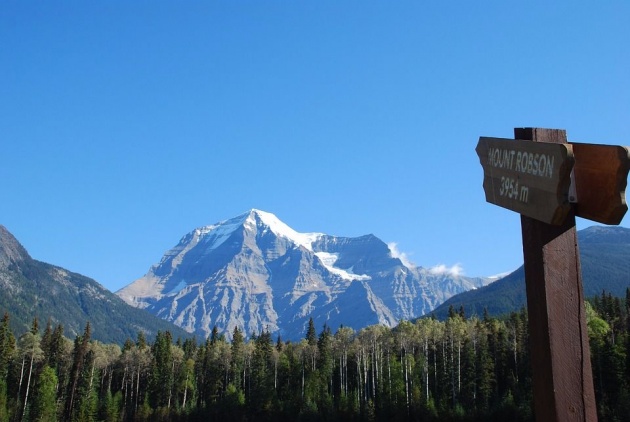
The highest peak in the Canadian Rockies is Mount Robson, in British Columbia, 12,972 feet (4,000 meters) high, but there are several other mountains that are more than 12,000 feet (3,600 meters) high. Although there are higher peaks in the United States, the Canadian peaks have much more snow. (Image Courtesy: pixabay.com)
Banff National Park, in Alberta, lies in the heart of the Canadian Rockies. Thousands of holiday makers flock there each year to camp, climb, and enjoy the beautiful wild scenery.

The Canadian Rockies are part of a mountain system stretching from Alaska to New Mexico. (Image Courtesy: pixabay.com)
FRONTIERS OF THE NATIONS
The mountains of Europe, although covering shorter distances than those of some other continents, have played an important part in the history of the world. The Alps, sweeping 660 miles (1,060 kilometers) from France to Yugoslavia, protected the Romans from invasion until Hannibal smashed through them with his war elephants.
The Pyrenees have for centuries kept the French on the side apart from the Spaniards and Portuguese on the other.

The types of plants and animals life found on a mountain change as the mountain rises. The land regions on either side of a mountain may also differ greatly because the mountain forms a barrier to normal weather conditions of the area. (Image Courtesy: pixabay.com)
HOW HIGH IS THE MOUNTAIN?
There is no set difference between a mountain and a hill. The highest mountains in the British Isles, for example, would see small among the foot-hills of the Himalayas. People use the term 'mountains' for the highest peaks of land in their own region. The heights of mountains are measured by scientists called surveyors. The measurement is always given in the meters or feet, and this is the height of the summit above sea level. Usually, you look at a mountain from a raised part of the land that is already some distance above sea level. As a result, a mountain may not always look as high as its actual measurement.
QUESTION: What is the difference between the mountain and the hill?
Hills and mountains are both natural land formations that rise out of the landscape, but what is the difference between the two reliefs? Unfortunately, there is no universally accepted standard definition for the height of a mountain and a hill.
-ThoughtCo-
MOUNTAINS AND LIFE
If you climb a high mountain from its base to its top you will travel through many different zones of life. At the foot of the mountain, you usually find a forest of broad-leaved deciduous trees. (Deciduous trees are those that lose their leaves each year.) Then as you get some way up the mountain, the deciduous trees stop and you come to evergreen forests of cone-bearing trees.
Eventually, at what is called the 'tree line', these also come to an end. Then come meadows of grass with stunted trees or bushes. If the mountain is high enough and you can keep on going, plant life ceases and you are scrambling over bare rock. You may soon come to snow and ice unless it is summer. Even if it is summer or even if the mountain is in the tropics, its peak may be so high that is covered with snow: and there may be even glaciers ( slow moving ice masses) at great heights. The animal life will also vary from zone to zone, for animals depend on the plant life of the mountainside.
The reason for these change will become obvious to you as you climb. The further up you go, the colder it gets. In fact, the temperature falls by 3 degrees Fahrenheit for every 1,000 feet you climb (1 degrees Celsius for every 200 meters). The air gets thinner too because there is less air pressing down on you as you reach higher the atmosphere. At the top of Everest, the world's highest mountain, the air so so thin that mountaineers have to carry oxygen tanks to help them breathe.
People, except in aircraft, and animals, except for birds, cannot cross high mountain ranges. Mountains have therefore shaped the ways in which people and animals live throughout the world. There may be different groups of animals on either side of a mountain range just as there are often different countries.
MOUNTAINS AND THEIR USES
Mountains can act as barriers against invaders. Switzerland tucked always among the Alps, would be a difficult country to invade because of them. As a result, it was able to live at peace in both World Wars I and II.
Mountains also protect regions from wind and rain. When winds meet mountains they rise to blow over them. As they do so, the air cools and rain falls. The air coming out on the other side of the mountain range is dry as it comes down again, it gets warmer, Barren and even desert lands are often found on the sides of the mountains range away from the source of the normal winds in that region.

Winds blowing towards a mountain rise to pass over it. The air cools as it rises, and rain falls. Descending winds on the other side are warm and dry. (Image Courtesy: pixabay.com)
Mountains provide man with raw materials and places for enjoyment. They give us timber, hydroelectric power from the rivers that tumble down their sides, and minerals. The layers of rock that form mountains are twisted and folded so that mineral veins come to or near the surface and can easily be mined. But mountains are also becoming increasingly important to as places for holidays. people can escape from city life and refresh themselves in the mountains. For this reason, the conversation (saving) of mountain regions from development is becoming important. Clearing mountain slopes of trees for timber, damming valleys for hydroelectric power and tearing out mountainsides for minerals means destroying a valuable part of nature.
All Rights reserved. No part of this article
may be reproduced without special credits from the authors in Wikipedia.com.

